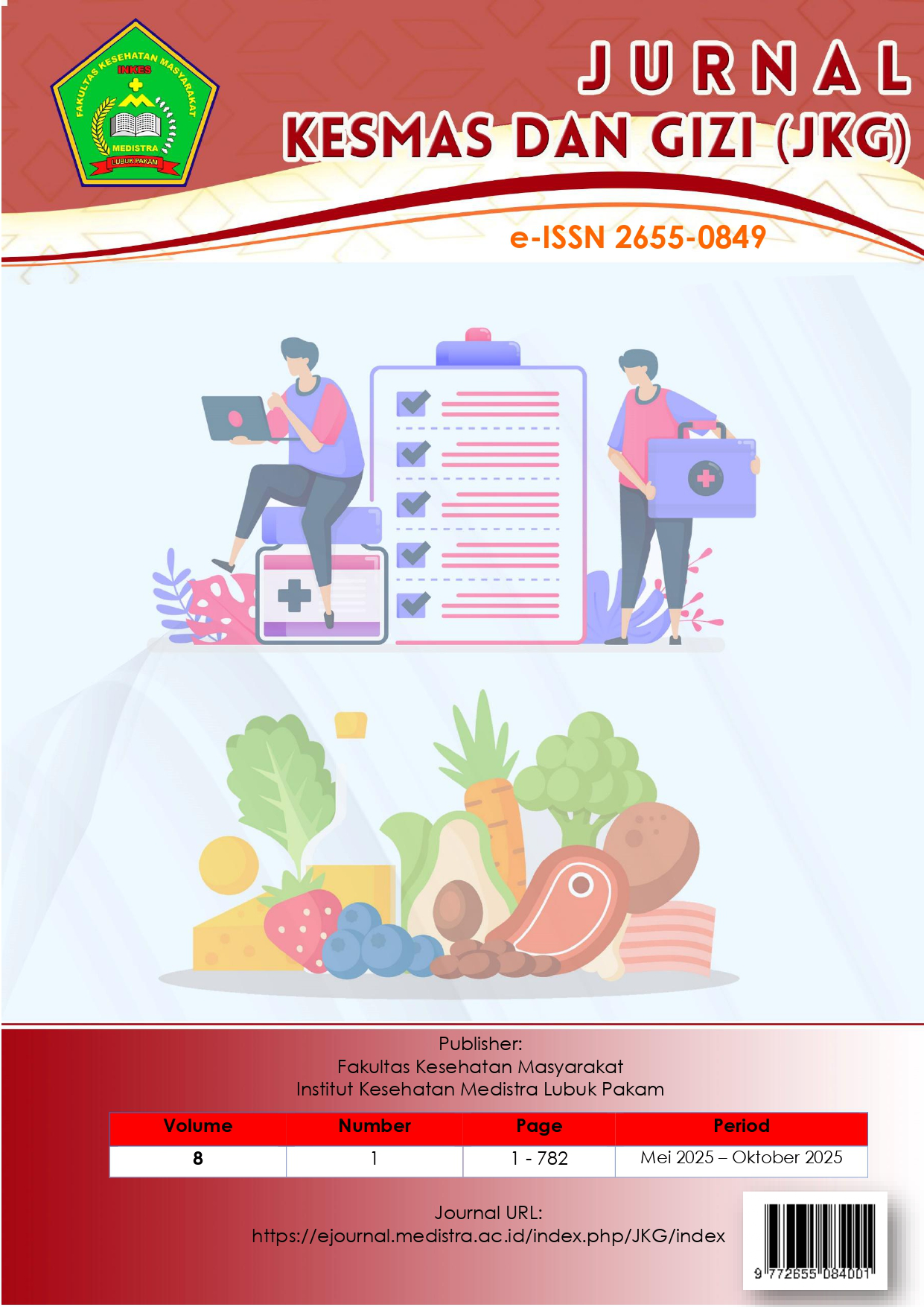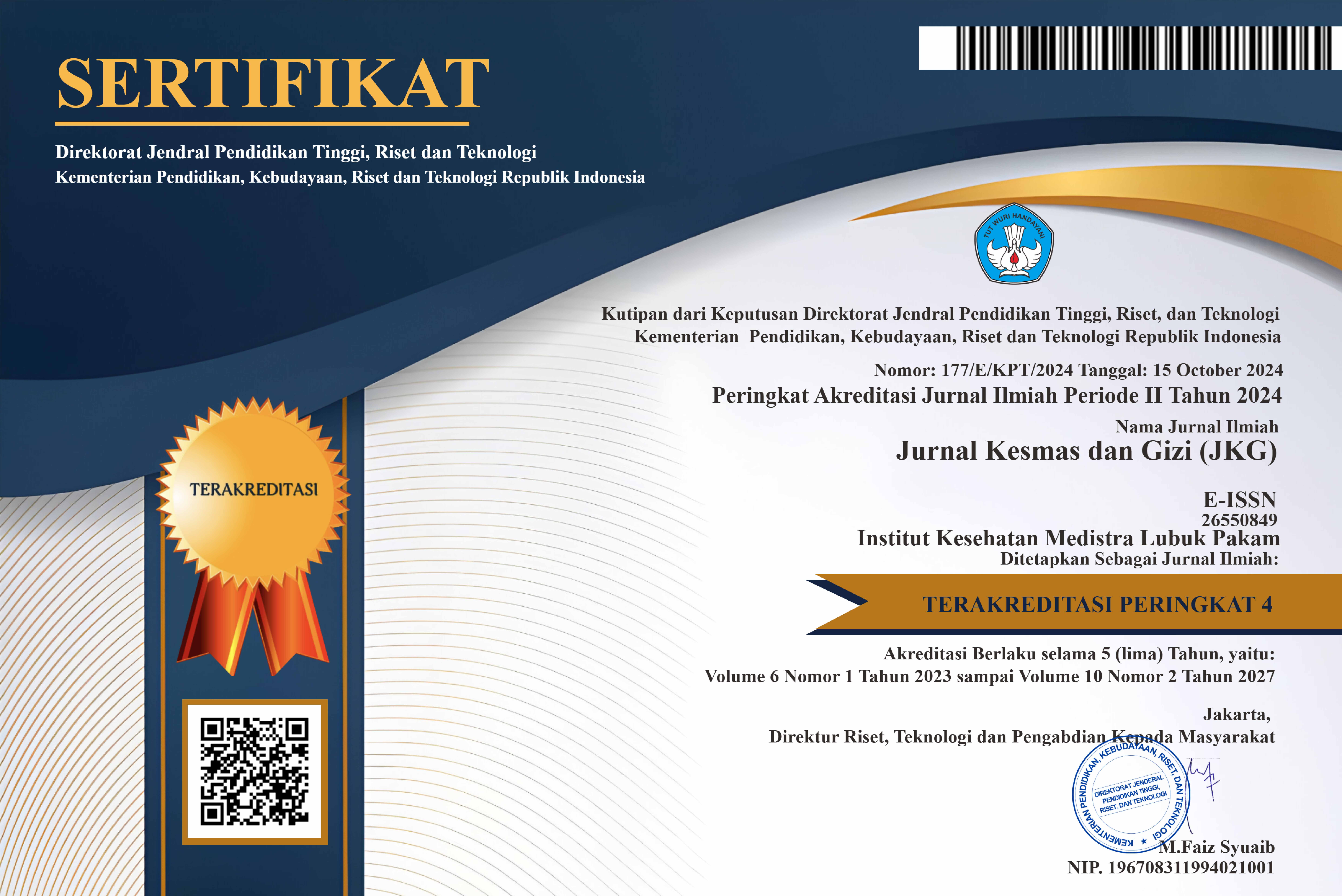Malaria Prevention Model Based on Kinship System Rakut Si Telu Orat Si Waluh
DOI:
https://doi.org/10.35451/dgqwca68Keywords:
Malaria, karo tribe, community capital, rakut si telu, orat si waluhAbstract
Malaria remains a global health problem and affects many tropical countries. Indonesia ranks second in Asia with the highest number of deaths from malaria. The Karo tribe has a kinship system of rakut si telu orat si waluh which is projected to be a community asset in implementing malaria prevention. This study is a qualitative study using in-depth interviews with malaria patients, three key informants, and eight relatives of malaria patients based on the rakut si telu orat si waluh system. The results found that malaria sufferers are often exposed to rain and activities outside the home at night, in the house there is a water reservoir, a lot of land in Rampah Village which was previously not taken care of so that the conversion of forests into gardens and residential areas, the community gives attention to malaria sufferers both in terms of informing the place of treatment and also facilitating sufferers to seek treatment, Karo tribal kinship based on rakut si telu orat si waluh also has a role in helping malaria treatment where each relative based on their kinship position has different tasks in helping sufferers treat malaria. Malaria prevention in the Karo community can be done by applying community capital based on the local perspectives of rakut si telu and orat si waluh. People involved in the rakut si telu and orat si waluh kinship systems have their respective roles in dealing with families suffering from malaria in terms of planning, prevention, handling and treatment.
Downloads
References
[1]. WHO. Global technical strategy for Malaria 2016-2030 [Internet]. 2021. Available from: https://www.mmv.org/sites/default/files/uploads/docs/ publications/World_Malaria_Report_2021.pdf
[2]. WHO. World malaria report 2020 [Internet]. 2020. Available from: https://www.mmv.org/sites/default/files/uploads/docs/publications/World_Malaria_Report_2020.pdf
[3]. Dinkes Provsu. Data Malaria Sumatera Utara. 2020.
[4]. Dinkes Langkat. Laporan Rekapitulasi Kasus Malaria. 2021.
[5]. Ehsan A, Klaas HS, Bastianen A, Spini D. Social capital and health: A systematic review of systematic reviews. SSM - Popul Heal [Internet]. 2019;8(April):100425. Available from: https://doi.org/10.1016/j.ssmph.2019.100425
[6]. Mensah D. The role of social capital in malaria control in nyabondo , western kenya masters of science ( Research Methods ) JOMO KENYATTA UNIVERSITY OF. 2015; Available from: http://ir.jkuat.ac.ke/bitstream/handle/123456789/1876/MENSAH%2C David-MSc. RESEARCH METHODS-2015.pdf?sequence=1&isAllowed=y
[7]. Sembiring V, Marsaulina I, Mutiara E. Correlation of home environmental factors and habits of residents with malaria incidence in asahan regency, north sumatra province in 2018. 2020;7[1]:35–44.
[8]. Sari K. Penerapan budaya Karo “Aron dan Runggu” oleh Kepala Ruangan dalam meningkatkan kinerja di tim keperawatan [Internet]. 2019. Available from: https://doi.org/10.31219/osf.io/pzy6x
[9]. Streubert HJ, Carpenter DR. Qualitative research in nursing advancing the humanistic imperative. 5th ed. Philadelphia: Lippincott Williams & Wilkins; 2011.
[10]. Endah Setyaningrum. Mengenal Malaria dan Vektornya. Vol. 53, Bandarlampung, Maret 2020. 2020. 13 p.
[11]. Tangena J anne A, Thammavong P, Lindsay SW, Brey PT. Risk of exposure to potential vector mosquitoes for rural workers in Northern Lao PDR. 2017;1–17.
[12]. Nuraisyah F, Nurlaily N, Ruliyandari R, Irjayanti A, Irmanto M, Sugiarto S. The Spatial Analysis for Malaria Surveillance in Yogyakarta Special Region , Indonesia : A Cross Sectional Study. J Epidemiol Public Heal. 2021;7[4]:1–16.
[13]. Sawasamariay O, Sombuk HL. Hubungan alih fungsi lahan pabrik semen terhadap kejadian malaria di distrik manokwari selatan. 2020;93–7.
[14]. Rahi M, Sharma A. Malaria control initiatives that have the potential to be gamechangers in India ’ s quest for malaria elimination. 2022;2:1–12.
[15]. Tsegaye AT, Ayele A, Birhanu S. Prevalence and associated factors of malaria in children under the age of five years in Wogera district , northwest Ethiopia : A cross- sectional study. 2021;1–9.
[16]. Ng’ang’a PN, Aduogo P, Mutero CM. Strengthening community and stakeholder participation in the implementation of integrated vector management for malaria control in western Kenya : a case study. Malar J. 2021;1–14.
[17]. Carlton JM, Muller R, Yowell CA, Fluegge MR, Sturrock KA, Pritt JR, et al. Profiling the malaria genome: a gene survey of three species of malaria parasite with comparison to other apicomplexan species. Mol Biochem Parasitol. 2001 Dec;118[2]:201–10.
[18]. Shiell A, Hawe P, Kavanagh S. Social Science & Medicine Evidence suggests a need to rethink social capital and social capital interventions. Soc Sci Med. 2020;257(September 2018):111930.
[19]. Farrell G, Thirion S. Social capital and rural development: from win-lose to win-win with the LEADER initiative. 2022.
[20]. Al-khrabsheh AA, Balqa AL. The strategic role of human resources management in performing crisis management : the mediating role of organizational culture and human capital during covid-19 ( an applied study on the jordanian ministry of health ). 2022;25[1]:1–18.
[21]. Siregar RN, Hani AM, Hati LP, Ginting LDC. Eksistensi rakut sitelu dalam penerapan sistem kekerabatan masyarakat di desa sukanalu kabupaten karo. 2023;43[4]:342–6.
[22]. Bangun R. Mengenal Suku Karo. 3rd ed. Jakarta: Kesaint Blane Indah; 2022.
[23]. Sakwe N, Bigoga J, Ngondi J, Njeambosay B, Esemu L, Nyonglema P, et al. Relationship between malaria , anaemia , nutritional and socio-economic status amongst under-ten children , in the North Region of Cameroon : A cross-sectional assessment. 2019;1–17.
[24]. Widiastuti D, Ikawati B, Sunaryo S, Pramatama S, Wijayanti M. Community behavior in malaria prevention after the implementation of intervention programs in Purworejo , Magelang , and Kulonprogo Regencies Community behavior in malaria prevention after the implementation of intervention programs in Purworejo , Magelan. 2021;(February).
[25]. Kendie FA. Potential biological control agents against mosquito vector in the case of larvae stage : A review. 2020;28(November 2019):34–50.
[26]. Nkemngo FN, Mugenzi LMJ, Terence E, Niang A, Wondji MJ, Tchoupo M, et al. Multiple insecticide resistance and Plasmodium infection in the principal malaria vectors Anopheles funestus and Anopheles gambiae in a forested locality close to the. 2020;1–29.
[27]. Leontsini E, Maloney S, Ramírez M, Rodriguez E, Gurman T, Sara AB, et al. A qualitative study of community perspectives surrounding cleaning practices in the context of Zika prevention in El Salvador : implications for community-based Aedes aegypti control. 2020;1–14.
[28]. Awasthi KR, Jancey J, Clements ACA, Rai R, Leavy JE. Community engagement approaches for malaria prevention, control and elimination: a scoping review. BMJ Open. 2024 Feb 15;14[2].
[29]. Bardosh K, Desir L, Jean L, Yoss S, Poovey B, Nute A, et al. Evaluating a community engagement model for malaria elimination in Haiti: lessons from the community health council project (2019–2021). Malar J. 2023 Dec 1;22[1].
Downloads
Published
Issue
Section
License
Copyright (c) 2025 Rahmadani Sitepu

This work is licensed under a Creative Commons Attribution 4.0 International License.
Copyright in each article is the property of the Author.


























